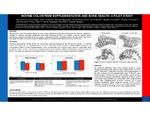| dc.description.abstract | Research has shown the positive effects of some bovine colostrum components in bone cells; for instance, lactoferrin is reported to stimulate osteoblast proliferation and inhibit osteoclast activity in cell cultures. However, whether bovine colostrum as a whole can induce bone mass gains in osteoporotic bones is relatively unclear. The aim of this study was to investigate the effects of bovine colostrum supplementation in ovariectomized-induced bone loss (OVX) rats. Methods: Twenty-seven-month-old female Wister rats (n=16) were randomly assigned to the following two groups: 1) a healthy control (non-OVX) with no supplementation, and 2) a OVX with bovine colostrum supplementation (0.5g/day; oral consumption). After 5 months supplementation, bone microstructure was scanned using micro-CT (right tibia). Bone formation markers (serum: pre-and post supplementation) were analysed (alkaline phosphatase and osteocalcin) by ECLIA. The study was approved by the National Ethics Committee for the Use of Animals in Research (ORBEA). Results: No significant differences were found between groups in serum alkaline phosphatase either before or after supplementation (p>0.05). Serum osteocalcin significantly increased post-supple-mentation in the OVX compared to pre-supplementation (pre: 11.32+/-1.61; post: 12.45+/-1.21μg/L, p<0.05), but not in the healthy control (p>0.05). Trabecular bone mineral content (BMC), trabecular thickness, cortical bone mineral density (BMD) and cortical BMC were similar between groups after supplementation (p>0.05). However, OVX group revealed significantly higher trabecular porosity (5.6%, p<0.01), trabecular separation (36.3%, p<0.01), and cortical porosity (8.0%, p<0.01) compared to the healthy control post-supplementation. Conclusion: Bovine colostrum seems to preserve bone mass of OVX by stimulating bone formation. However, these positive effects seem not to be sufficient to restore bone micro-architecture in the OVX group, possibly because the administrated dose of bovine colostrum was not sufficient for OVX to catch-up healthy rats in terms of trabecular and cortical porosity. The potential therapeutic use of bovine colostrum for osteoporosis deserves further investigation. | en |
| dc.identifier.bibliographicCitation | (2019), 2019 Annual Meeting of the American Society for Bone and Mineral Research Orange County Convention Center, Orlando, Florida, USA September 20–23, 2019. J Bone Miner Res, 34: S1-S442. https://doi.org/10.1002/jbmr.3936 | en |


